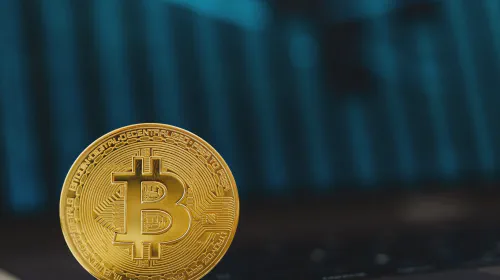Tapping into the Power of NFC Payments
Salomon Kisters
Jun 14, 2023This post may contain affiliate links. If you use these links to buy something we may earn a commission. Thanks!
Today’s world is all about convenience, and nothing exemplifies this better than contactless payments. NFC payments have revolutionized the way we pay for goods and services, and their popularity is only set to rise.
This technology utilizes near-field communication to allow payments to be made through smartphones, smartwatches, and other devices. This means that we no longer have to carry cash or even our wallets with us, as all we need is our trusty device.
In this blog post, we will dive into the world of NFC payments and explore the benefits and potential drawbacks of using this technology. We will also discuss how businesses can utilize NFC payments to create more seamless payment experiences for their customers.
So buckle up and get ready to tap into the power of NFC payments.
What is NFC payment and why it is important for businesses?
NFC payment, or near-field communication payment, is a contactless method of paying for goods and services utilizing radio frequency identification technology. This technology enables the electronic exchange of payment data between a customer’s mobile device and a merchant’s payment terminal. NFC payments are faster and more secure than traditional payment methods such as cash or credit/debit cards and are gaining popularity due to their convenience.
Businesses can benefit from integrating NFC payment technology into their payment systems.
- NFC payments reduce transaction times, allowing businesses to serve more customers in less time. This is particularly important in high-traffic environments such as busy cafes or fast-food restaurants.
- NFC payments provide a more seamless payment experience for customers, enhancing the overall customer experience and satisfaction.
- NFC payments reduce the need for paper receipts and cash handling, benefiting both the business and the environment.
NFC payment vs traditional payment methods
While NFC payments offer a number of advantages, it’s important to consider how they compare to traditional payment methods. One advantage of traditional methods such as cash is that they don’t require any special technology or equipment. This means that businesses can continue to accept payments even if their payment systems go down or they experience a power outage.
Credit and debit cards, on the other hand, offer many of the same benefits as NFC payments, such as convenience and security. However, some customers may be hesitant to use their cards due to concerns about fraud or identity theft. In addition, traditional payment methods can often be slower than NFC payments, as they require customers to swipe or insert their cards and verify their identity with a signature or PIN.
The choice between NFC payments and traditional payment methods will depend on the unique needs and preferences of each business and its customers. However, with the many advantages that NFC payments offer, it’s clear that this technology will continue to play a key role in the future of payment processing.
How to implement NFC payment in your business?
If you’re interested in implementing NFC payment in your business, there are a few things to keep in mind. The first step is to make sure your payment processing equipment is compatible with NFC technology. This may require an upgrade to your point-of-sale system or the installation of a separate NFC reader.
Once you have the necessary equipment, you’ll need to work with your payment processor or bank to enable NFC payments on your account. This may involve setting up a new merchant account or updating your existing account with the necessary information.
It’s also important to educate your staff and customers about how to use NFC payments. This may involve providing training or signage to explain the process. You should also make sure your staff is prepared to handle any technical issues that may arise.
Also, consider the security implications of NFC payments. While they offer many benefits, they do require careful attention to security standards to prevent fraud or unauthorized charges. Make sure your payment processing system is up-to-date with the latest security protocols and consider working with a security consultant to ensure that your business is fully protected.
Benefits of using NFC payment for businesses and customers
NFC payments offer several benefits for both businesses and customers.
For businesses, the primary advantage is the speed and convenience of the transaction. With NFC payments, customers can simply tap their phone or card against the payment terminal, eliminating the need for swiping, entering a PIN, or signing a receipt. This can speed up the checkout process, reducing lines and wait times and ultimately improving customer satisfaction.
In addition, NFC payments offer increased security compared to traditional magnetic stripe cards. Because the transaction is encrypted and tokenized, the risk of fraud and theft is greatly reduced. This can save businesses money and protect them from legal liability in the event of a breach.
For customers, NFC payments offer a convenient and seamless way to pay for purchases. They can leave their wallets at home, using their phone or smartwatch to make payments instead. In addition, because NFC payments are so quick and easy, they can make it easier to track expenses and stay on budget.
The benefits of NFC payments are clear. They offer increased speed, convenience, and security for businesses and customers alike, making them an attractive option for any business looking to improve the payment experience for their customers.
The future of NFC payments
While NFC payments have become increasingly popular in recent years, several trends are likely to shape their future.
The first trend is the increased adoption of contactless payment technology. As more businesses and consumers become comfortable with NFC payments, we can expect to see an even greater shift toward contactless payments. This will likely lead to a further decline in the use of traditional magnetic stripe cards, as customers increasingly opt for the speed and convenience of contactless payments.
Another trend to look out for is the integration of NFC payments into wearables and other smart devices. Smartwatches, fitness trackers, and even clothing are already being designed with NFC chips that allow for contactless payments. As these devices become more common and sophisticated, we can expect to see even more creative uses for NFC payments.
Beyond wearables, NFC payments are also likely to be integrated into other devices and technologies as well. For example, we may see NFC-enabled vending machines, public transit systems, and even home appliances that allow for contactless payments.
One final trend to watch is the continued evolution of NFC security. While NFC payments are already more secure than traditional magnetic stripe cards, there is always room for improvement. As hackers become increasingly sophisticated and persistent, we can expect to see new security measures, such as biometric authentication, designed to protect NFC payments from threats.
To sum it up, the future of NFC payments looks bright. With new technologies and security measures on the horizon, we can expect to see even greater adoption and innovation in the world of contactless payments.
Conclusion
In conclusion, NFC payments are a game-changer for the world of payments. The ease, speed, and security that NFC payments provide have quickly made them a preferred option for many businesses and consumers alike. As we have seen, the future of NFC payments will open up even more opportunities for contactless payments.
To truly tap into the power of NFC payments, businesses should make it a priority to offer contactless payment options to their customers. This will not only provide a seamless payment experience for customers, but it will also position businesses as forward-thinking and innovative leaders in their industries.
For consumers, embracing NFC payments means being able to quickly and securely make purchases on the go, without the need to carry cash or cards. The integration of NFC payments into wearables and other devices means that payment options are always at our fingertips.
As the world becomes more digital, and the demand for convenient, contactless payment options grows, the adoption of NFC payments will only continue to increase. By embracing NFC payments, businesses and consumers alike can stay ahead of the curve and enjoy a seamless, secure, and convenient payment experience.
Stay informed with the latest insights in Crypto, Blockchain, and Cyber-Security! Subscribe to our newsletter now to receive exclusive updates, expert analyses, and current developments directly to your inbox. Don't miss the opportunity to expand your knowledge and stay up-to-date.
Love what you're reading? Subscribe for top stories in Crypto, Blockchain, and Cyber-Security. Stay informed with exclusive updates.
Please note that the Content may have been generated with the Help of AI. The editorial content of OriginStamp AG does not constitute a recommendation for investment or purchase advice. In principle, an investment can also lead to a total loss. Therefore, please seek advice before making an investment decision.

Solana vs. Algorand - A Comprehensive Comparison
Get a detailed comparison of Solana vs. Algorand including their consensus mechanisms, tokenomics, adoption, and more to decide which blockchain network is better suited for your needs.

Top 5 Blockchains for NFT Development - Choose the Best Blockchain for Minting NFTs
Discover the top 5 blockchains for NFT development and choose the best blockchain for minting NFTs based on transaction speed, cost, security, smart contracts, and consensus mechanism.

How to Learn About Blockchain Technology
Literature about Blockchain technology is everywhere. Here is an overview of recommended books and courses that help you to learn about blockchain technologies.
Protect your documents
Your gateway to unforgeable data. Imprint the authenticity of your information with our blockchain timestamp